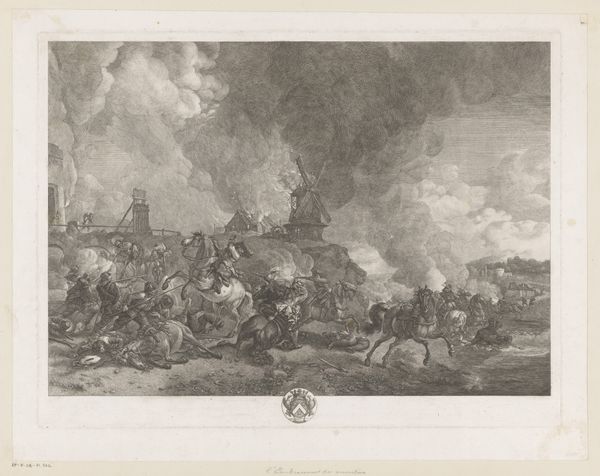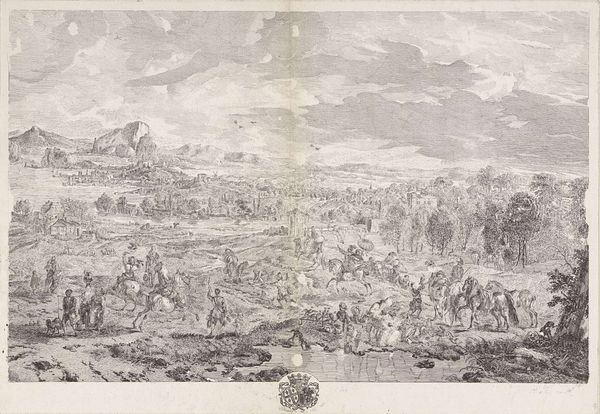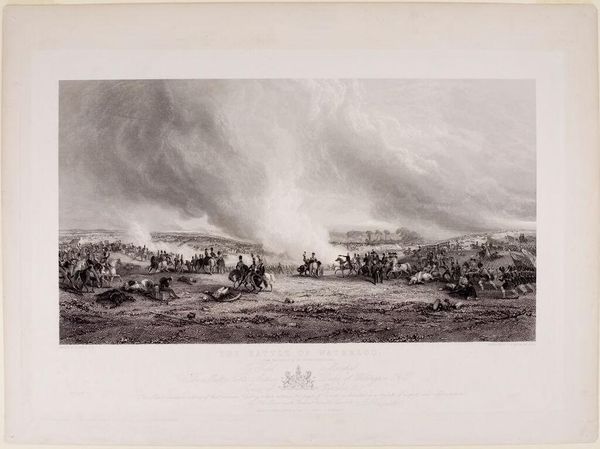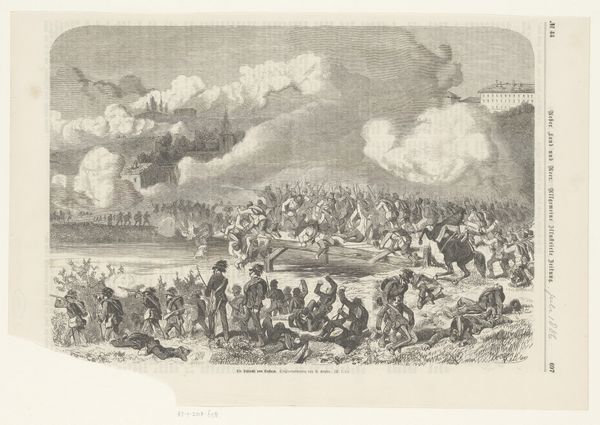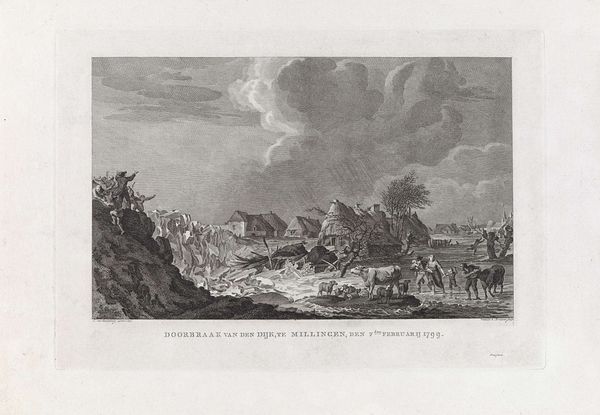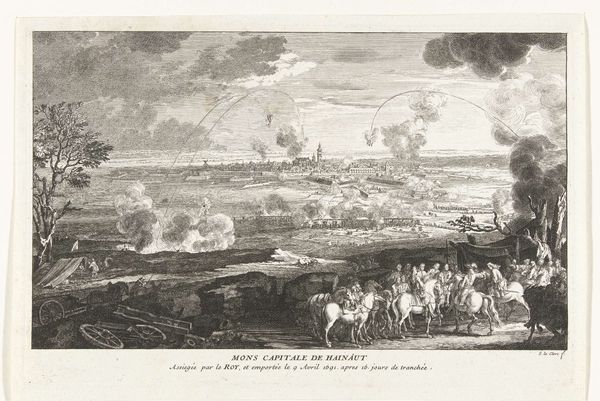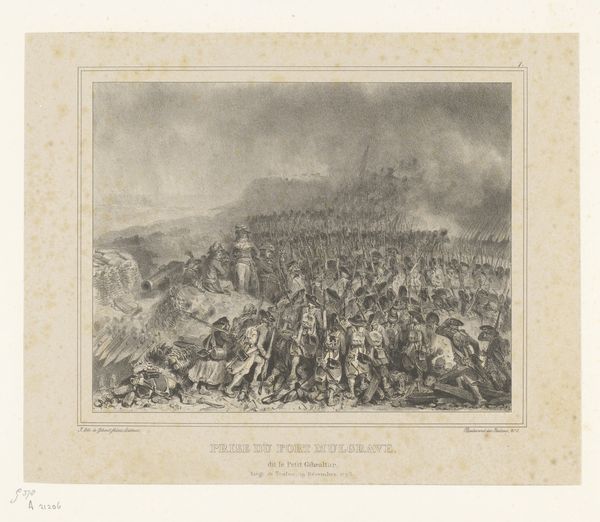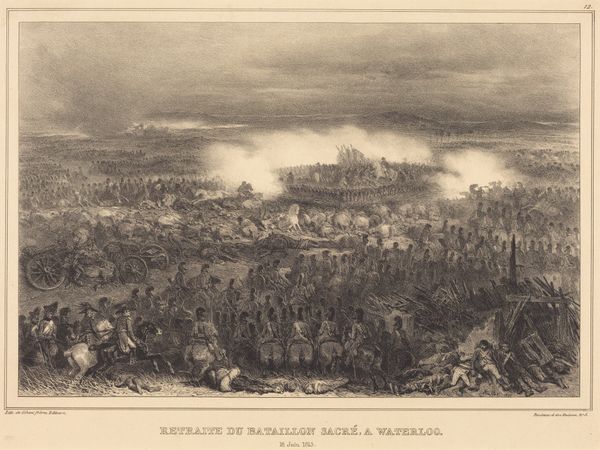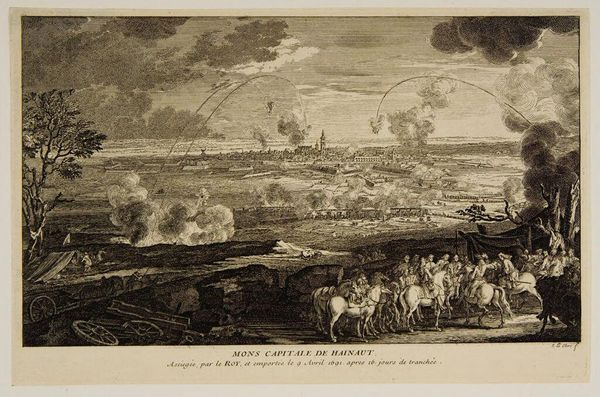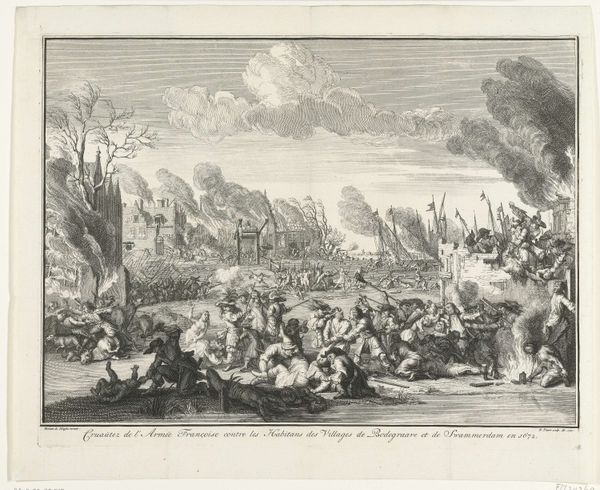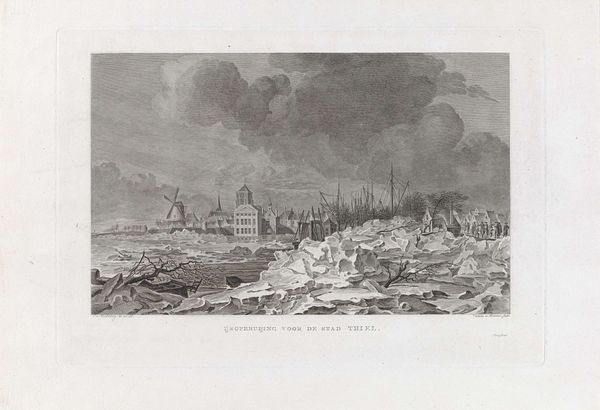
print, engraving
#
narrative-art
# print
#
landscape
#
figuration
#
romanticism
#
history-painting
#
engraving
Dimensions: height 562 mm, width 773 mm
Copyright: Rijks Museum: Open Domain
Curator: My first impression is just—smoke! It billows out from the landscape, dominating the entire scene, a greyish miasma swallowing figures and details whole. Editor: Indeed. What you’re sensing is likely due to the romantic and turbulent visual style used by Johann Hürlimann in “Prins van Oranje in de slag bij Quatre-Bras, 1815,” created around 1825-1826. It’s an engraving, which helps explain the detail amid the smoky haze. Curator: An engraving! Wow, to capture so much movement and mayhem with such precision! The tiny figures on horseback… each locked in combat or tumbling down. It feels less like a history lesson, and more like a fever dream about war. Editor: It captures an interesting tension, doesn't it? On one hand, it has all the trappings of a historical record, a "history-painting", so to speak. However, that pervasive fog – a visual product of its romantic landscape style, perhaps obscures specific events or details, focusing on the overall mood of the battle, on loss and chaos rather than strategic positioning. Curator: Precisely! The Prince of Orange himself, for whom the piece is named – barely stands out from the chaos! It is as though the fog, and the engraver, treat everyone with brutal impartiality, no special favors granted for titles or lineage. Everyone seems mired in the muck and gunpowder. Editor: The landscape too, note how it isn't just a backdrop. Instead, it melds and contorts with the bodies. A compositional strategy, I suspect, intended to blur the line between subject and context, grounding all elements within a moment of upheaval. Curator: It also feels incredibly honest to me, capturing the experience of war more accurately than any sanitized heroic portrait ever could. The eye bounces from one figure to another, and yet everyone is swallowed by the same grey oblivion, it’s quite sobering really. Editor: Absolutely, the use of print contributes significantly. Its reproducible quality democratizes the depiction of war, distributing these grim visions far beyond the traditional, elite audience of history paintings, changing who has access to, and engages with, this visual narrative. Curator: That grey, unforgiving fog lingers with me, making it so anyone would feel they were on the battle field that day, as present and imperiled. Editor: Indeed, making Hürlimann's historical engraving both informative and evocative, a fascinating collision of romantic ideals and concrete materiality.
Comments
No comments
Be the first to comment and join the conversation on the ultimate creative platform.
